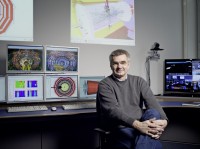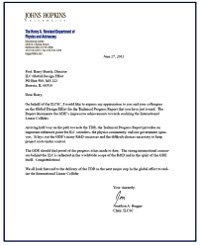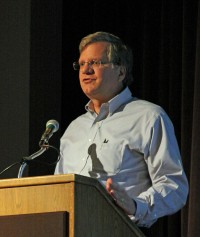Despite the various ups and downs in resources to support the ILC R&D and design programmes, the Global Design Effort has been able to continue to make impressive progress towards establishing ILC design parameters and technologies. In our new report, we present results that demonstrate superconducting radiofrequency high-gradient technology consistent with our goals, outline results on electron cloud mitigation that back up our simulations and give a detailed mitigation strategy, record impressive progress on final focus studies (before the Japanese earthquake), and report on other progress in establishing our baseline design. The responses to our report have been positive and encouraging, as we move on to the next step in developing the ILC Technical Design Report (TDR).
A letter from Jon Bagger, chair of the ILCSC, specifically comments that our new report “lays out the GDE’s many R&D successes and the difficult choices necessary to keep project costs under control.” There actually is no costing presented in the report, as we are just beginning our cost studies for the TDR. However, Jon has witnessed that the choices we have made for the new baseline and much of the focus of our R&D programme is on areas where costs are an issue and are being attacked aggressively in our evolving design. With the completion of the interim report and having established the TDR baseline, we are now beginning our costing studies in earnest. This week, we are in the midst of a set of meetings at Caltech, including a dedicated two-day meeting on costing for the TDR.

Joachim Mnich, ILCSC committee member and DESY Director in charge of High-Energy Physics and Astroparticle Physics
In addition to the letter from Jon Bagger, we are issuing a press statement at the time of the International Europhysics Conference on High Energy Physics (HEP 2011) at Grenoble, France, also this week, that publicises our progress and the release of this new report. In that statement, Joachim Mnich, who is also an ILCSC committee member and DESY Director in charge of High-Energy Physics and Astroparticle Physics in Germany, is quoted as saying, “There is a strong physics case for a linear collider and we are confident that it will become even stronger with the incoming results from the LHC. This report, a prime example for global collaboration, demonstrates that we have the technology at hand to rapidly move to a real project.”
The next meeting of the ILCSC will be held during the Lepton-Photon 2011 meeting in Mumbai, India next month. We will formally present the interim report to ILCSC at that meeting and cover our last Program Advisory Committee review report. I have discussed both topics in recent Director’s Corners, and both were quite positive. The main item that I expect will receive the most discussion at ILCSC is what future organisational structure, technical goals and strategy should follow for the ILC once we complete the Technical Design Report at the end of 2012.




Recent Comments